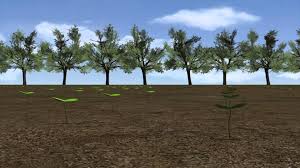
Breaking News
 $26M Frozen on Blockchain - With One Click
$26M Frozen on Blockchain - With One Click
 Italy are on national strike shutdown rejecting digital enslavement...
Italy are on national strike shutdown rejecting digital enslavement...
 The following U.S. states are currently using the rebranded "Reporty Homeland Security" so
The following U.S. states are currently using the rebranded "Reporty Homeland Security" so
 NATO Chief Urges Europe To Prepare For Long-Term World War With Russia, China, Iran & North Korea
NATO Chief Urges Europe To Prepare For Long-Term World War With Russia, China, Iran & North Korea
Top Tech News
 HUGE 32kWh LiFePO4 DIY Battery w/ 628Ah Cells! 90 Minute Build
HUGE 32kWh LiFePO4 DIY Battery w/ 628Ah Cells! 90 Minute Build
 What Has Bitcoin Become 17 Years After Satoshi Nakamoto Published The Whitepaper?
What Has Bitcoin Become 17 Years After Satoshi Nakamoto Published The Whitepaper?
 Japan just injected artificial blood into a human. No blood type needed. No refrigeration.
Japan just injected artificial blood into a human. No blood type needed. No refrigeration.
 The 6 Best LLM Tools To Run Models Locally
The 6 Best LLM Tools To Run Models Locally
 Testing My First Sodium-Ion Solar Battery
Testing My First Sodium-Ion Solar Battery
 A man once paralyzed from the waist down now stands on his own, not with machines or wires,...
A man once paralyzed from the waist down now stands on his own, not with machines or wires,...
 Review: Thumb-sized thermal camera turns your phone into a smart tool
Review: Thumb-sized thermal camera turns your phone into a smart tool
 Army To Bring Nuclear Microreactors To Its Bases By 2028
Army To Bring Nuclear Microreactors To Its Bases By 2028
 Nissan Says It's On Track For Solid-State Batteries That Double EV Range By 2028
Nissan Says It's On Track For Solid-State Batteries That Double EV Range By 2028
Aerial Seed Bombers Can Plant One Million Trees Per Day And Rebuild Forests

Deforestation has become a major issue that's accelerating climate change and rapidly affecting human, plant, insect, and animal lives every single day. It's incredible that some can constantly deny that climate change is real and, moreover, that humans are to blame for its quick progression when scientists state that 99% of currently threatened species are at risk of becoming extinct because of human activities. Such activities include global warming and habit loss, which is largely deforestation, and is causing dozens of species to go extinct every single day. Luckily, when humans finally decide to face what we have done, there are methods like aerial seed bombing that will come in handy with restoring our forests.
Aerial reforestation is a new method that uses planes to drop pointed containers with saplings inside, which could effectively plant about one million trees every day.
The original idea stemmed from a man named Peter Simmons, who suggested the following:
Equipment we developed for precision planting of fields of landmines can be adapted easily for planting trees. There are 2,500 C-130 transport aircraft in 70 countries, so the delivery system for planting forests is widely available – mostly mothballed in military hangers waiting for someone to hire them. The possibilities are amazing. We can fly at 1,000ft at 130 knots planting more than 3,000 cones a minute in a pattern across the landscape – just as we did with landmines, but in this case each cone contains a sapling. That's 125,000 trees for each sortie and 900,000 trees in a day.
To build on this, few years ago a graduate student in Mechanical Engineering at MIT named Moshe Alamaro developed what are called conical canisters. The canisters are made of a biodegradable material that contain a seedling packed in soil and nutrients. They were designed to be dropped from a low-flying plane so that the canisters hit the ground at 200 mph and embed themselves in the soil, promising optimal growth.
With Alamaro's canisters, a large aircraft could drop up to 100,000 saplings in a single flight, ultimately leading to nearly one million trees per day.
Thailand has already made plans to begin with a five-year pilot project that utilizes the aerial reforestation method to boost forest regeneration for forests that have deteriorated.
Check out the video below to see how seed bombing works:

 Carbon based computers that run on iron
Carbon based computers that run on iron

